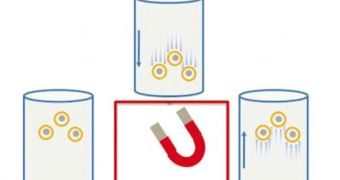One of the main reasons cancer kills even after aggressive therapies is applied is the fact that cancerous cells have the ability to migrate to other organs. That is to say, they can become separated from the site of the original tumor, and then enter the bloodstream. From here, it can go anywhere it chooses, and finding this singular cells is an extremely difficult task. Now, thanks to a new technology coming from the University of Washington (UW), finding elusive cancer cells may become possible.
According to investigators at the university, what their new method does is essentially eliminate the background noise that covers the motions of single cells. Compared to the proverbial needle and haystack, what the new approach does is basically eliminate the haystack. This allows the needle to become apparent. The thing about this needle is that, by finding it, doctors may very well become able to save the lives of thousands of patients, perhaps even more. The key to this new approach is a multi-functional nanoparticles developed at the University of Washington.
The team says that the new approach has already been validated in a practical test. Details of the achievement are published in the July 27 issue of the esteemed scientific journal Nature Communications. The UW team explains that all ultrasensitive medical imaging techniques could have a lot to gain by using nanoparticles as contrast agents. However, they observe, not using radioactive tracers leaves the signals of single cells in danger of being covered up by background noises.
“Although the tissues are not nearly as effective at generating a signal as the contrast agent, the quantity of the tissue is much greater than the quantity of the contrast agent and so the background signal is very high,” explains Xiaohu Gao of how the new nanoparticle acts. He is the lead author of the new investigation, and also an assistant professor of bioengineering at UW. “We use an external magnetic field to shake the particles. Then there's only one type of particle that will shake at the frequency of our magnetic field, which is our own particle,” he concludes.

 14 DAY TRIAL //
14 DAY TRIAL //